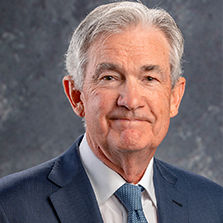
A critical but often overlooked determinant of
how much companies pay for business travel is exchange rates. In 2022, the big
story in currency movements was the strengthening of the U.S. dollar, a direct
consequence of the interest rate strategy set by Jerome Powell at the helm of
the Federal Reserve.
By the beginning of March, inflation in the
U.S. had reached 8 percent. Fed policy is to try to limit inflation to 2 percent,
so Powell reached for the biggest lever at his disposal: raising interest
rates. Since March, the Fed has pushed rates up from just above zero to nearly
4 percent, including four consecutive months of 0.75-point increases from
August to November, the steepest hike since the early 1980s.
When a country raises its interest rates,
foreign capital flows in, driving in turn the appreciation of its currency.
Sure enough, that happened to the dollar. Against the euro the greenback
appreciated from €0.89 in March to a high of €1.04, although it since has
receded to €0.95. Against sterling the dollar was already at an historic high of
£0.75 in March and then soared to a jaw-dropping £0.93 during the brief but
disastrous U.K. premiership of Liz Truss, before settling back to £0.82 at time
of writing.
For business travelers visiting the U.S., the
hardening of the dollar has added even more financial agony on top of the pain
of underlying inflation in hotel, restaurant and car rental pricing. For U.S.
business travelers visiting everywhere else, the dollar’s strength has gone a
long way to mitigating that inflationary pain.
But business travelers everywhere also pay more
because the majority of input costs in global aviation—an estimated 60 percent
for long-haul carriers—are priced in dollars, including fuel and aircraft
leasing. It is a complicated picture because airlines hedge their exchange
rates, and there are many other inflationary pressures. However, the rampage of
the dollar unleashed by Powell has undoubtedly contributed to a CWT/Global
Business Travel Association assessment that global airfares have shot up 40-odd
percent in 2022.
Powell is one of that increasingly rare breed
of Republicans who look for bipartisan consensus, explaining why Joe Biden gave
him a second four-year term as Fed chair after originally being installed by
Donald Trump. He generally is regarded as having had a good pandemic.
But those hoping Powell may soon soften the
dollar by changing his interest rate strategy are likely to be disappointed.
“By any standard, inflation is much too high,” he declared on Nov. 30. “I will
simply say that we have more ground to cover.”